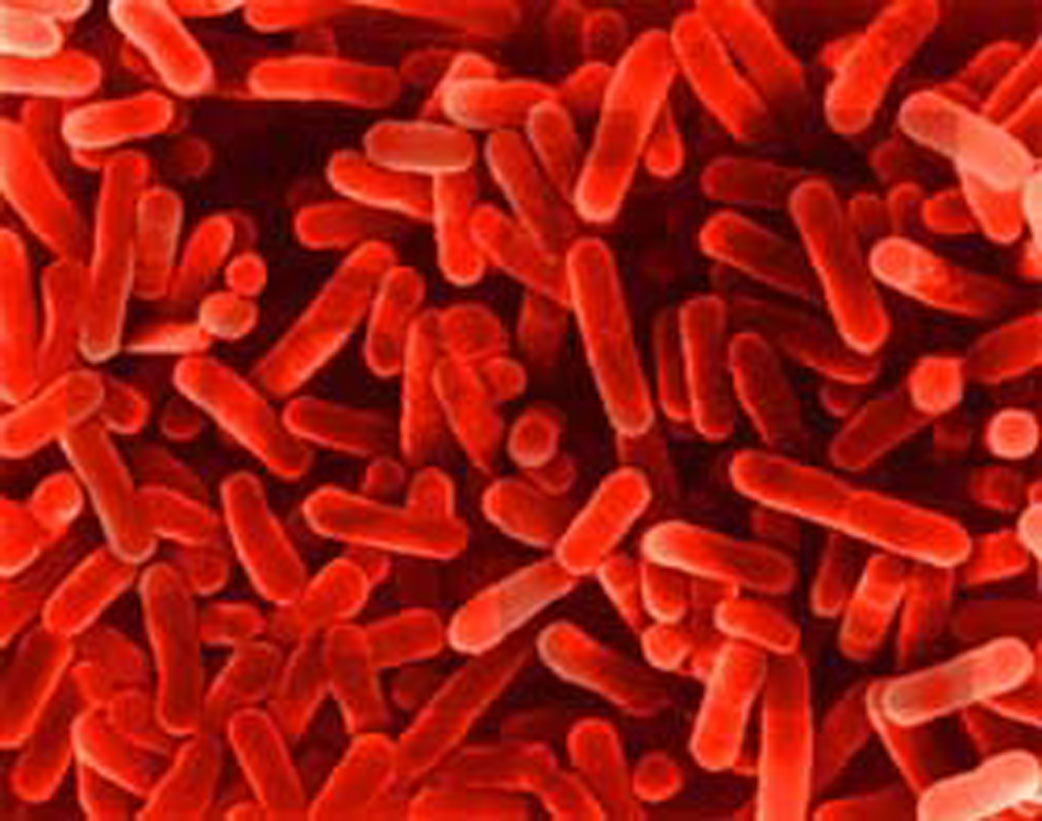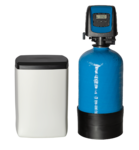Hydrotense Europe How does it work? Legionella prevention
Legionella prevention
Books have been written about legionella. Sometimes the given facts are contradictory, most of the time the information is vague and impractible.
Hydrotense Europe has put its experiences together and gives you practical information. Simple, without any overdone scientific blah-blah.
De bacteria.
 The legionella bacterium is always present in our tapwater, in surfacewaters and in the soil. There are several species of legionella and only a few of them are dangerous to humans. Especially the species legionella pneumophila (translated as "the bacteria that feels comfortable in our lungs") is dangerous.
The legionella bacterium is always present in our tapwater, in surfacewaters and in the soil. There are several species of legionella and only a few of them are dangerous to humans. Especially the species legionella pneumophila (translated as "the bacteria that feels comfortable in our lungs") is dangerous.
The legionella bacterium is a smart little creature. It hides in the "biofilm" (the slimy surface layer at the inside of water pipes and hoses) where it can not be reached by chemical desinfectants like chlorine.
Furthermore the microbe hitchhikes with little organisms (amoebes) that are normally present in our potable water and can safely travel our water piping systems. The microbe is a thermical resistant bacterium that can survive temperatures of up to 60 degrees Celsius. The bacterium is really tough and has to be exposed for a longer period to elevated temperatures before it dies.
The bacterium doubles itself in about two hours time when the right conditions are present (food and a nice temperature of 20 tot 50 degrees Celsius).
If there are 100 creatures in a liter of water they will muliply in 48 hours to 1.7 billion.
It is plausible that the microbe is not resistant to stomach acid and so cannot cause any damage when swallowed. The little creature is very tiny which means that lots and lots of them can be contained in a tiny drop of water (aerosol).
To cause the veterans disease the microbes have to be inhaled into the lungs. In most cases the natural lung cleaning mechanism will get rid of those unwanted visitors presuming there are not too many of them and the mechanism functions properly. That is the reason that heavy smokers are more sensitive to be infected because the natural lung cleaning mechanism is damaged by the frequently inhaled cigarette smoke.
Everywhere where a haze of tiny water drops (aerosol) can occur there is a chance of being infected, may it be a shower, cleaning when using a high pressure cleaner, a beautifull fountain or during the irrigation of fields using sprayed surface water.
The veterans disease (legionelloses)
When the microbes are inhaled they will settle comfortably in the lungs The human body will react to these unwantend renters with a dry cough, high fever and other flue related symptoms soon followed by severe pneumonia.
In the early stages it is well possible to treat these symptoms succesfully with proper medicines, but only if the correct cause is diagnosed.
Many anti-bacterial medicines which are normally applied during a pneumonia will not fight the legionella bacterium. It is of importance to point out to the doctor in attendance that a legionella infection might be possible. A simple urine antigen test can in a matter of hours confirm this suspicion.
It is assumed that when a proper treat is delayed too long the microbe will migrate within the human body and can harm other organs like the liver and the brain. Proven or not, this is not a matter to take any chances with.
How often does an infection occur and how many victims are there.
About this information there is an ongoing difference of opinion. However it is plausible to assume that there are people dying of pneumonia caused by the legionella bacterium where the cause is not correctly diagnosed. Pneumonia is especially in the home of the elderly a quite common disease and cause of death. These victims are not added to the official lists. That is why the official statistics and the assumed figures do largely differ. In the Netherlands the authorities assume that there are 100 victims each year. However the foundation on behalf of the "veterans disease" assumes that the real count is 10 too 20 times as high.
Consequences on the long term
There is still no proper investigation on the long term consequences with humans that are apparently cured. However 70% of the people that were infected during the Bovenkarspel disaster (The Netherlands 1999, 32 dead, 270 infected) still suffer from symptoms as muscle pain and weaknesses, memory problems coordination problems and the chronic fatigue syndrom
Where is the danger?
The couple of creatures that enter our domestic or industrial piping system can muliply to a dangerous amount when:
1. They stay alive and
2. The circumstances to muliply are favourable.
Let's have a look at these favourable conditions.
To multiply, the microbes need the following: Food (always present), temperature and time.
Time:
If we use our tapwater system frequently (several times each day) The creatures will hardly get time enough to multiply into dangerous amounts. However non flushable (dead) piping, non used forks (garden faucet) and garden hoses that lay forgotten snugly in the sun are a true nursery for all kinds af microbes. And don't forget the watertank in the caravan, mobile home or yacht or that energy saving solar collector. Every spot containing water where that water is not regularly refreshed and where that water can reach a nice temperature is dangerous. Evidently all in house water piping is subject to become a microbe nursery when not used regularly.
Temperature:
The bacterium always muliplies. At lower temperatures (< 20 degrees Celsius) this process evolves very slowly. At higher temperatures the mulitiplication evolves much faster. It is clear that in house water piping will reach this nice temperature much more often then piping burried deep in the ground. By the way, did you check if your piping system is installed close to the pipes of your heating system or even runs alongside the piping of the floor heating?
The authorities reccomended to adjust the temperature of your boiler or other heating devices to a temperature of over 60 degrees Celsius. This evidently kills off all bacteria. However, if we take a shower we mix this hot disinfected water with cold water containing active bacteria. By mixing these temperatures the resulting water has a nice temperature for bacteria multiplication.
Should we panic?
No, but there is a reason for being prudent. Simple measures as frequently flushing the system and when coming home from an extended leave flushing the shower for some minutes before taking that well deserved shower reduces the dangers considerably. And don't forget to flush the garden hose before using it when it has been cooking in the sun.
Are there other more reliable and sustained measures for protection?
The market is swarmed with magical "machines" claiming to be the best solution for the legionella (and other bacterial) problems. Most of the time the disadvantages and the high cost is not mentioned.
Filtersystems
The microbes are withheld in the filters but stay alive and active thus causing the danger that when the filter is faulty your complete piping system gets severely infected. The so called "legionella free shower heads" are nothing but shower heads containing a simple filter. These systems are plain dangerous if they are not replaced frequently.
There are filter systems that are frequently backflushed and where the trapped bacteria are wasted into the sewer. A reliable solution with however a remark: Every filter causes a substantial pressure drop (the water passes through very tiny holes) and the system needs in most cases an extra pressure pump and a pressure vessel. The relatively expensive filters need to be replaced regularly.
Disinfection using hot water.
Flushing the complete system with hot water of over 60 degrees celsius is a reliable method. The bacteria are killed and nothing is added to or subtracted from the water.
There are some disadvantages using this method of disinfection. 1. It takes a large amount of energy to frequently flush the complete system with hot water. 2. Provisions have to be made to let the hot water enter the cold water system. 3. Maintaining the desired temperature in larger systems at industries, campings and yachting harbours is very difficult. The long piping cools down the water very fast giving the tough creature a chance to survive.
Disinfection using Ultra Violet light.
Our ancestors knew it only too well, if someone is sick spread the bedsheets out on the lawn exposed to the sunlight and pathogens are killed.
Ultra violet light is that part of the sunlight that kills bacteria effectively. By exposing the incoming tapwater to high energy Ultra Violet light ALL bacteria are burned and not one single creature can enter the water system.
Resume:
Several dangerous bacteria are always present in our tapwater. These creatures are not dangerous if they can not multiply or if they can not enter our tapwater system. Thoroughly and regularly flushing the system even with hot water protects the user only for a limited time. Filters are effective in withholding the bacteria but could be dangerous because bacteria stay active.
Only a combination of filtering, UV disinfection and regularly (once a year) disinfecting the system with a anti bacterial substance is the only relaible procedure that gives a long lasting protection and is very cost effective.
If you want to know more about the possibilities to effectively fight legionella (and other pathogens) in water, please do not hesitate to contact us. We will be glad to help.
Hydrotense Europe, water disinfection technology.
Gasthuisstraat 14, 5061 PB Oisterwijk
Postbus 232, 5061 AE Oisterwijk
T. +31 13 5213 268
F. +31 13 5213 269
Adviseur: Harry M.A. Oosterbeek
http://www.hydrotense.eu



